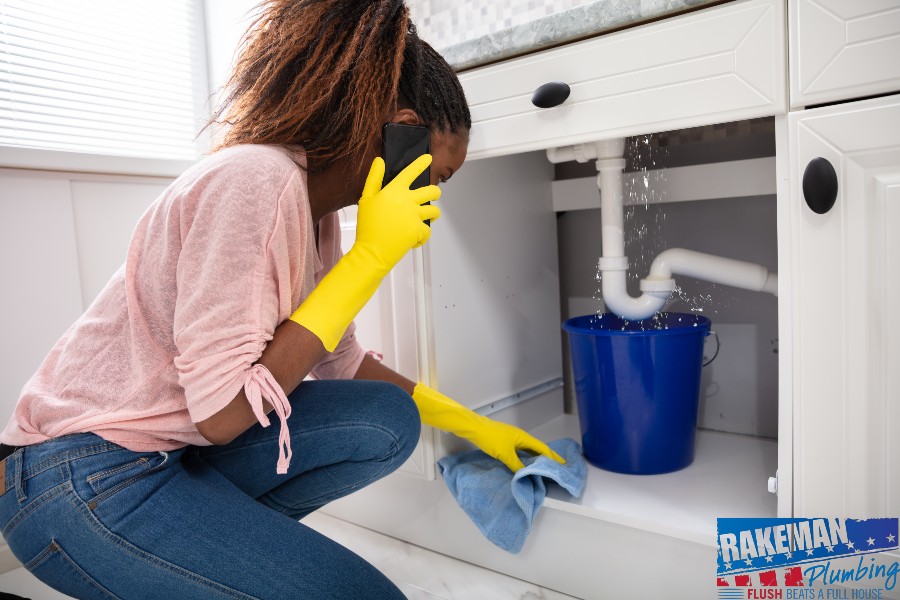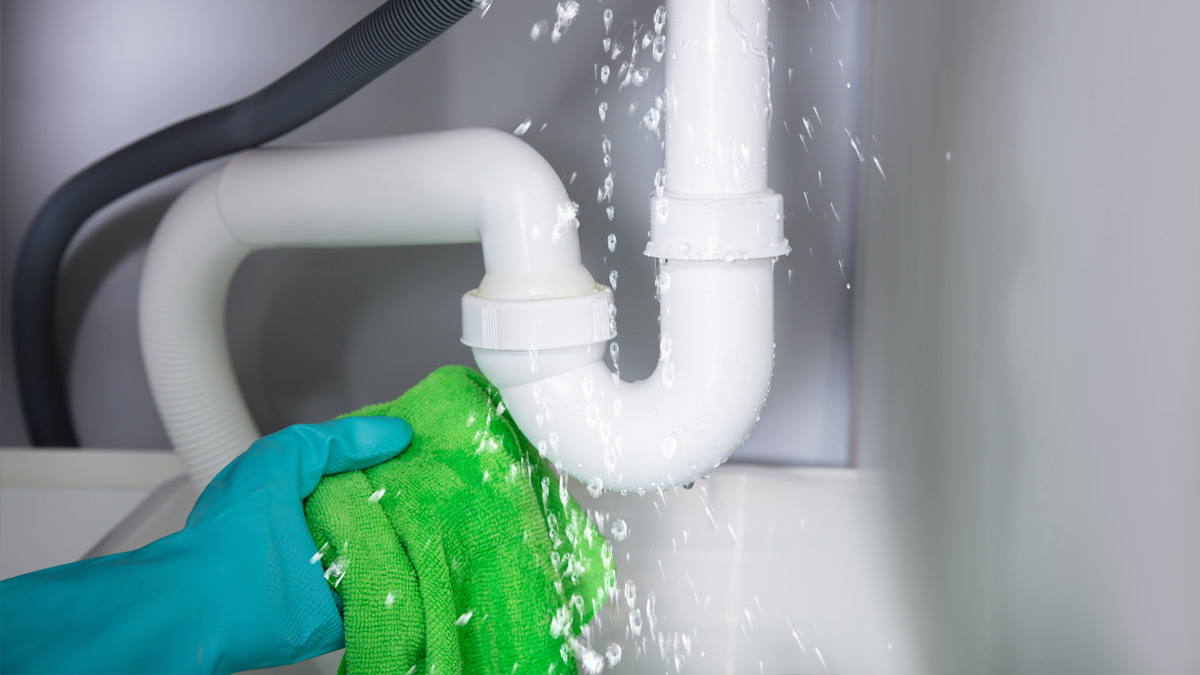If you've noticed water pooling under your kitchen sink, chances are you have a leak. Not only can a leaky kitchen sink cause damage to your cabinets and floors, it can also waste a significant amount of water and lead to higher utility bills. But don't panic, fixing a leaky kitchen sink is a common household repair that can easily be done by anyone with a few basic tools and some DIY know-how. In this article, we'll walk you through 10 simple steps to fix a leaky kitchen sink and get your plumbing back in working order.How to Fix a Leaky Kitchen Sink
One of the most common causes of a leaky kitchen sink is a faulty drain. Over time, the seal around the drain can wear out, causing water to seep out and create a mess under your sink. To fix this issue, start by turning off the water supply to your sink and removing any standing water. Then, use a wrench to loosen the nut that holds the drain in place. Once the nut is removed, you can replace the old seal with a new one and reattach the drain.How to Repair a Leaking Kitchen Sink Drain
Aside from a faulty drain, there are a few other common causes of kitchen sink leaks. These include loose or damaged pipes, a worn out sink trap, a leaky faucet or sprayer, and a damaged basket strainer. It's important to identify the source of the leak before attempting to fix it, as different issues may require different solutions.Common Causes of Kitchen Sink Leaks
If your kitchen sink drain is beyond repair, you may need to replace it entirely. This may sound intimidating, but it can actually be a fairly simple process. Start by removing the old drain, then clean and prepare the area for the new drain. Next, apply plumber's putty around the edges of the new drain and insert it into the sink. Finally, secure the drain in place with a nut and washer, and you'll have a brand new leak-free drain.How to Replace a Kitchen Sink Drain
When it comes to plumbing repairs, many people are quick to call a professional. However, with the right tools and a little bit of confidence, you can save yourself time and money by tackling the repair yourself. Whether it's fixing a leaky pipe or replacing a sink trap, there are plenty of DIY resources available online to guide you through the process step by step.DIY Kitchen Sink Plumbing Repair
If your kitchen sink has a sprayer attachment, it's possible for it to develop a leak over time. This can be caused by a worn out O-ring or a damaged hose. To fix this issue, start by turning off the water supply and removing the sprayer head. Check the O-ring for any signs of wear and tear, and replace it if necessary. If the hose is the issue, you can easily purchase a replacement at your local hardware store.How to Fix a Leaking Kitchen Sink Sprayer
A leaky kitchen sink faucet is not only annoying, it can also waste a significant amount of water and lead to a higher water bill. To fix this issue, start by turning off the water supply and removing the faucet handle. From there, you can identify the source of the leak and determine if any parts need to be replaced. It's also a good idea to clean the faucet while you have it disassembled to prevent future leaks.How to Fix a Leaking Kitchen Sink Faucet
A leaky pipe under your kitchen sink can cause significant damage if left untreated. To fix this issue, start by turning off the water supply and identifying which pipe is leaking. You may need to replace a section of the pipe or simply tighten a loose connection. If the leak is coming from a joint, you can use plumber's tape or joint compound to create a watertight seal.How to Fix a Leaking Kitchen Sink Pipe
The sink trap, also known as the P-trap, is a curved section of pipe under your sink that is designed to prevent sewer gases from entering your home. Over time, this trap can become worn out or clogged, leading to leaks. To fix this issue, start by placing a bucket under the trap to catch any water that may spill out. Then, use a wrench to loosen the nuts on either end of the trap and remove it. Clean out any debris and replace the trap, making sure to tighten the connections securely.How to Fix a Leaking Kitchen Sink Trap
The basket strainer is the metal or plastic piece that sits in the drain and catches food scraps and other debris. Over time, the seal around the basket strainer can wear out, causing leaks. To fix this issue, start by removing the old strainer and cleaning the area around the drain. Then, apply plumber's putty around the edges of the new strainer and insert it into the drain. Finally, tighten the nut underneath the sink to secure the strainer in place. In conclusion, a leaky kitchen sink may seem like a daunting problem, but with the right tools and a little bit of knowledge, it can be easily fixed. By following these 10 steps and addressing the most common causes of kitchen sink leaks, you can save yourself time and money and get your plumbing back in tip-top shape. Remember, if you're ever unsure about a repair, don't hesitate to call a professional for assistance.How to Fix a Leaking Kitchen Sink Basket Strainer
Addressing Leaking Plumbing Under the Kitchen Sink - A Common Household Issue

Understanding the Problem
/how-to-install-a-sink-drain-2718789-hero-24e898006ed94c9593a2a268b57989a3.jpg) Plumbing issues are a common occurrence in households, and one of the most frequent issues that homeowners face is
leaking plumbing under the kitchen sink
. It can be frustrating to discover a puddle of water under the sink, and it is important to address this issue immediately to prevent further damage. In this article, we will discuss the causes of leaking plumbing under the kitchen sink and how to fix it.
Plumbing issues are a common occurrence in households, and one of the most frequent issues that homeowners face is
leaking plumbing under the kitchen sink
. It can be frustrating to discover a puddle of water under the sink, and it is important to address this issue immediately to prevent further damage. In this article, we will discuss the causes of leaking plumbing under the kitchen sink and how to fix it.
Causes of Leaking Plumbing Under the Kitchen Sink
 There are several reasons why your kitchen sink plumbing may be leaking. One of the main reasons is
old, worn-out pipes
. Over time, pipes can develop cracks or holes, causing water to leak out. Another common cause is
loose connections
. If the pipes under your sink are not properly connected, they may become loose and cause leaks. Additionally,
clogged drains
can also lead to leaking plumbing. When water cannot properly drain, it can put pressure on the pipes, causing them to leak.
There are several reasons why your kitchen sink plumbing may be leaking. One of the main reasons is
old, worn-out pipes
. Over time, pipes can develop cracks or holes, causing water to leak out. Another common cause is
loose connections
. If the pipes under your sink are not properly connected, they may become loose and cause leaks. Additionally,
clogged drains
can also lead to leaking plumbing. When water cannot properly drain, it can put pressure on the pipes, causing them to leak.
Fixing the Problem
 Fortunately, leaking plumbing under the kitchen sink can be fixed with a few simple steps.
Replacing old, worn-out pipes
is the most effective solution. This may require the assistance of a professional plumber, as it involves cutting and fitting new pipes. If the issue is caused by
loose connections
, simply tightening the connections can solve the problem. For
clogged drains
, using a plunger or drain cleaner can help clear the blockage and stop the leak.
Fortunately, leaking plumbing under the kitchen sink can be fixed with a few simple steps.
Replacing old, worn-out pipes
is the most effective solution. This may require the assistance of a professional plumber, as it involves cutting and fitting new pipes. If the issue is caused by
loose connections
, simply tightening the connections can solve the problem. For
clogged drains
, using a plunger or drain cleaner can help clear the blockage and stop the leak.
Preventing Future Leaks
 To prevent future leaking plumbing under the kitchen sink, it is important to
regularly check and maintain your pipes
. This means inspecting them for any signs of wear and tear, and addressing any issues immediately. It is also important to
properly connect and secure the pipes
to prevent them from becoming loose. Another preventive measure is
avoiding putting grease and food scraps down the drain
, as this can lead to clogs.
In conclusion,
leaking plumbing under the kitchen sink
is a common household issue that can be easily fixed and prevented. By understanding the causes and taking the necessary steps to address and prevent leaks, you can ensure the proper functioning of your kitchen plumbing and avoid any future headaches. Remember to regularly check and maintain your pipes, and do not hesitate to seek professional help if needed.
To prevent future leaking plumbing under the kitchen sink, it is important to
regularly check and maintain your pipes
. This means inspecting them for any signs of wear and tear, and addressing any issues immediately. It is also important to
properly connect and secure the pipes
to prevent them from becoming loose. Another preventive measure is
avoiding putting grease and food scraps down the drain
, as this can lead to clogs.
In conclusion,
leaking plumbing under the kitchen sink
is a common household issue that can be easily fixed and prevented. By understanding the causes and taking the necessary steps to address and prevent leaks, you can ensure the proper functioning of your kitchen plumbing and avoid any future headaches. Remember to regularly check and maintain your pipes, and do not hesitate to seek professional help if needed.


































/how-to-install-a-sink-drain-2718789-hero-b5b99f72b5a24bb2ae8364e60539cece.jpg)
























































